African violets are a much-loved houseplant that can bring interest and a pop of color to your home. These compact plants produce clusters of stunning blooms in hues of blue, purple, red, pink, and white, and leaves covered in a soft fuzz.
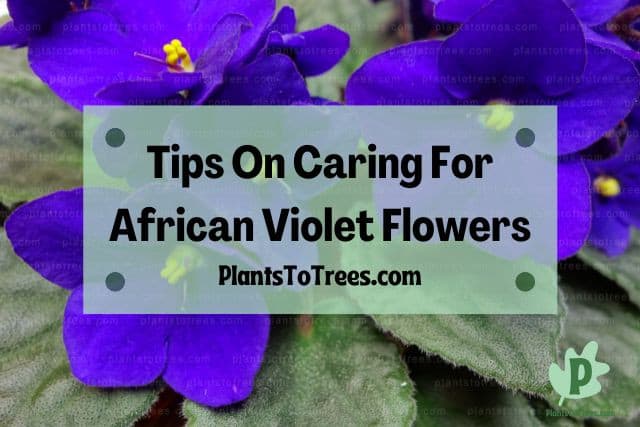
Learning tips on caring for African violet flowers is the best way to keep your plants healthy and blooming for as long as possible. These low-maintenance flowers are not difficult to grow, but do require a few requirements to keep them happy.
How Long Do African Violet Blooms Last?
Because the African violet is mostly grown for its stunning flowers, it is only natural to wonder how long these blooms will last.
How long African violet blooms last depends on the variety, although you can expect individual blooms to last for a few days to even several weeks. When the temperature is between 60 to 75 degrees Fahrenheit and humidity is high, the blooms tend to last longer.
How Often And When Do African Violets Bloom?
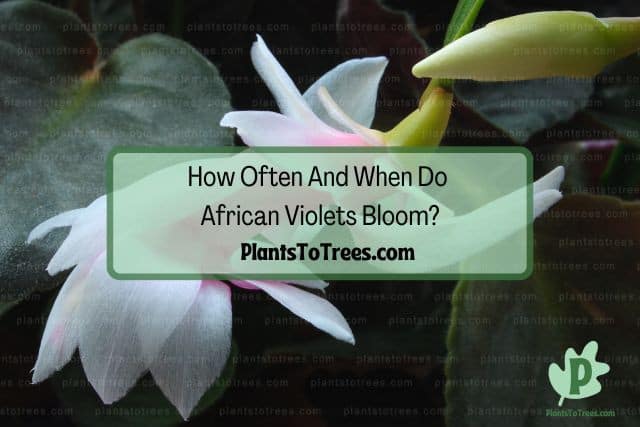
If given the proper care and growing requirements, an African violet plant can continue to bloom over and over again. But how often and when do these plants flower?
African violets can bloom almost year round if provided with the right care. An African violet flower can last from 1 to 3 weeks, and if the plant is healthy, it could keep producing blooms for 10 or more months out of the year.
African Violet Not Blooming, How Do I Get It To Bloom?
If your African violet isn’t blooming, it can leave you feeling frustrated and upset. After all, the blooms of this plant are one of the reasons why it is a popular choice for houseplants.
African violets won’t bloom if they are not getting enough light. The best way to get your plant to bloom is to place it near an east- or north-facing window where it can get bright, but indirect sunlight. For best results, allow the plant to get about 12 hours of light and 8 hours of darkness.
African Violet Flowers Dying
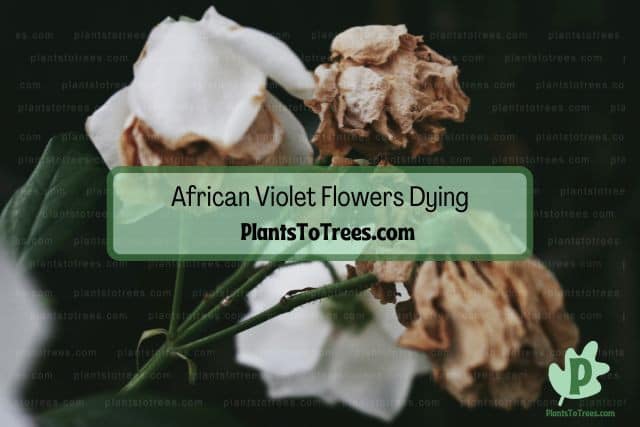
Even though African violets are relatively easy to grow, they can quickly die if not given the right care.
Overwatering your African violet is the quickest way to cause the plant to die. When it gets too much water, the entire plant will start to become limp, and rot will occur. On the other hand, not providing enough water will cause the plant to lose its color, vigor, and begin to shrivel and dry up.
African Violet Flowers Turning Brown
African violets produce blooms of various colors, but brown isn’t one of them. When your African violet flowers start to turn brown, it is a huge sign that the plant isn’t getting the proper care it needs.
African violet flowers turning brown is a sign that the plant is drying up due to lack of water. Underwatering can also cause the soil to dry and pull away from the plant’s pot, as well as wilted blooms and dry, crispy leaves.
African Violet Flowers Turning White
Seeing a white growth on your African violet is not something to take lightly. In most cases, this growth is a disease that can spread to other plants if not quickly treated.
When the African violet flowers turn white, the plant is probably infected with powdery mildew. This fungal disease is a common problem for plants both inside and out, and it typically occurs on houseplants in winter and early spring.
The most common sign of powdery mildew is a white, powder-like substance forming on the leaves, blooms, and stems. In small cases of powdery mildew where only a few of the plant’s leaves and flowers are infected, you can simply remove and discard them to prevent the disease from spreading. If, however, there are several parts of the African violet, you will need to treat the plant with fungicide. Additionally, take steps to prevent the disease from returning by reducing humidity levels and improving air circulation.
African Violet Flowers Turning Blue
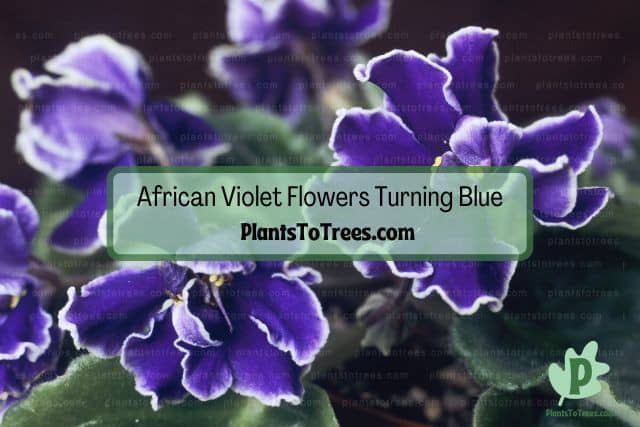
African violet blooms come in a range of colors, including blue. If, however, your African violet used to produce flowers of a different color and they are just now starting to turn blue, it could be a signal that something is wrong with the plant.
When an African violet starts to turn blue, it could be that the plant is actually a hybrid plant that is trying to revert to the original color. Another potential cause of the plant’s blooms changing color is the pH level of the soil.
Hybridized plants that have been registered have to go through three generations of cuttings, maintaining their color before they can be registered as a hybrid. They can, however, start to produce the same color flowers as one of the hybrid plants that it was born from.
We at Plants To Trees first published this article on November 2, 2022. Copyright protected.
If your African violet isn’t a hybrid, then the cause is likely the soil’s pH level. This is most often seen in hydrangeas, where you can alter the color of the bloom by increasing or decreasing the alkaline or acidity of the soil. African violets prefer a soil level that is slightly acidic, so aim for a pH level of between 5.8 to 6.2, which is perfect since blue blooms are most often found is soil that is slightly more acidic.
African Violet Losing Flowers
People grow African violets because of their attractive and vibrant blooms. So, it can be disheartening when your plant starts to lose its flowers.
An African violet losing flowers is a sign that the plant is getting too much water. Overwatering will also cause loss of leaves, limp stems, and even stem, crown, and root rot. Thankfully, you can prevent this from occurring by only watering when the first top 1 to 2 inches of soil is dry.
African Violet Flowers Drooping
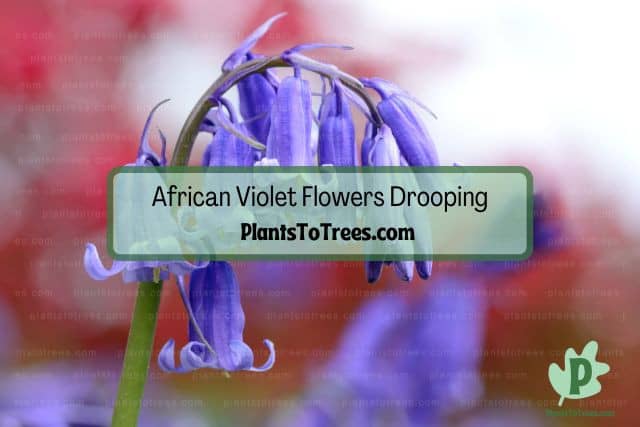
No one wants to see their stunning African violet flowers drooping. Not only is this unsightly, but it is also a sign that something is wrong with the plant.
African violet flowers drooping is caused by overwatering. In most cases, an African violet will need 1 to 2 inches of water every week, although the age and health of the plant, as well as the temperature and humidity level can all affect the amount of water it needs.
How To Keep African Violets Blooming
One of the benefits of growing African violets is the plant’s ability to keep blooming over and over again. But how do you keep this plant consistently flowering?
To keep your African violets blooming, you will need to give it plenty of light, increase the humidity level around the plant, fertilize it as needed, protect the plant from diseases and pests, and ensure it is growing in the right type of soil.
How Do I Get My African Violet To Bloom Again?
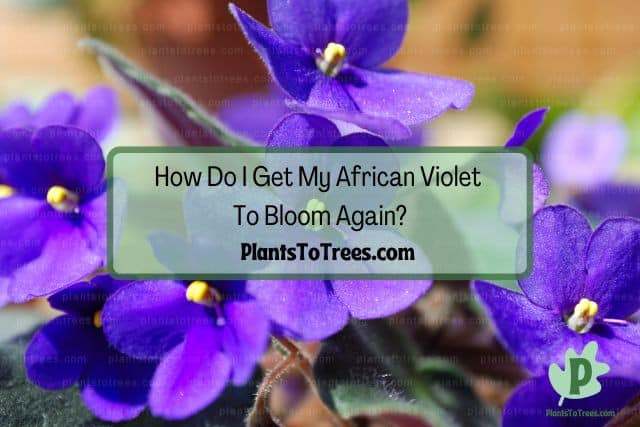
If given the proper care, your African violet can bloom almost continuously throughout the entire year. But this does require providing the plant with specific growing conditions to increase the amount of times it can bloom.
The best way to get your African violet to bloom again is to give the plant its optimal growing conditions. This means 12 hours of bright, indirect light, temperatures between 65 and 80 degrees, well draining soil that is slightly acidic, 1 to 2 inches of water a week, and 80% humidity.
How To Trim Dead Flowers From African Violets
Trimming dead flowers will help encourage new growth of your African violets. While this process isn’t difficult, it can be done incorrectly, which can lead to a decrease in the amount of blooms the plant produces.
The article owner is Plants To Trees dot Com and this article was first published on November 2, 2022.
To trim off dead flowers from the African violets, carefully hold the spent bloom and snip it off as close to the dead tissue as possible. Don’t cut off the flower stalk as this is where new blooms are produced. Furthermore, avoid tearing or ripping off the bloom, as this can damage the plant.
Related Articles
African Violet Plant Care Guide
Problems With African Violet Leaves (How to Fix)
PlantsToTrees.com is the owner of this article and we first published this on November 2, 2022.
